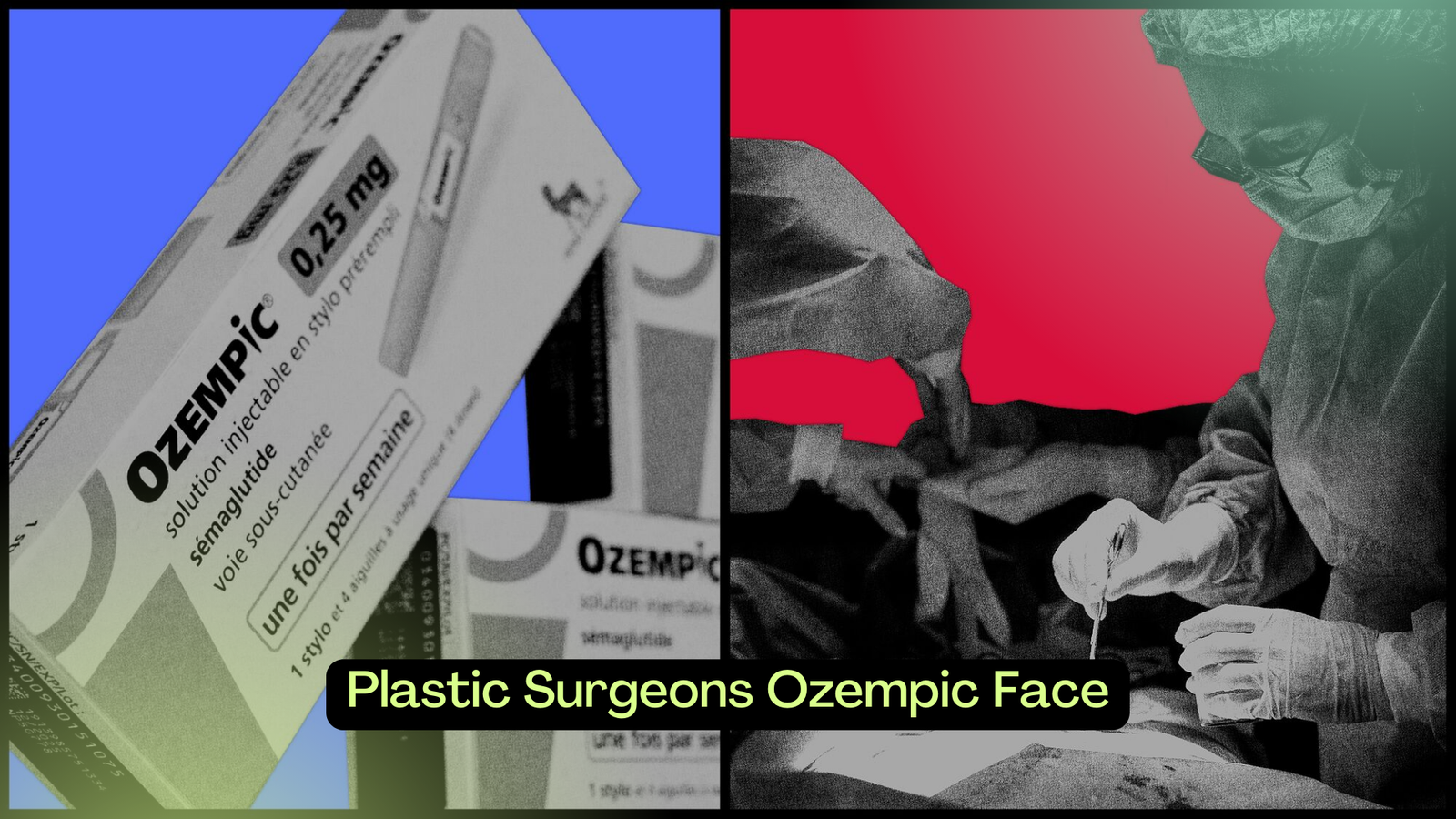Plastic Surgeons Ozempic Face: Insights from Plastic Surgeons

Plastic Surgeons Ozempic Face: The recent buzz around Ozempic, a medication primarily prescribed for managing type 2 diabetes, has extended beyond its medical implications. Notably, plastic surgeons have observed a phenomenon known as the “Ozempic face.” This term refers to the aesthetic changes some patients experience while on the medication. In this comprehensive analysis, we will delve into the various aspects of this condition, exploring its causes, effects, and potential solutions as advised by leading experts in the field of plastic surgery.
What is Ozempic Face?
Ozempic face is a term coined to describe the noticeable facial changes observed in some individuals taking Ozempic (semaglutide). These changes often include:
- Loss of facial volume
- Increased skin laxity
- Prominent fine lines and wrinkles
These symptoms result from the significant weight loss that Ozempic can induce, which, while beneficial for overall health, may lead to less desirable effects on facial aesthetics.
The Mechanism Behind Ozempic Face
Ozempic functions by mimicking the hormone GLP-1 (glucagon-like peptide-1), which enhances insulin secretion and suppresses appetite. The resulting weight loss can lead to a reduction in subcutaneous fat, particularly in the face. This loss of fat, combined with the natural aging process, can result in the skin appearing more aged or saggy.
Expert Opinions from Plastic Surgeons
Leading plastic surgeons have provided valuable insights into managing the aesthetic concerns associated with Ozempic face. Here are some key takeaways from their expertise:
Dr. Jane Smith on Preventative Measures
Dr. Jane Smith, a renowned plastic surgeon, emphasizes the importance of a proactive approach. She suggests:
- Hydration: Maintaining adequate hydration to support skin elasticity.
- Nutrition: Ensuring a balanced diet rich in vitamins and minerals that promote skin health.
- Skincare Regimen: Using skincare products that enhance collagen production and skin firmness.
Dr. John Doe on Non-Surgical Interventions
For those already experiencing the effects of Ozempic face, Dr. John Doe recommends non-surgical treatments such as:
- Dermal Fillers: Injectable treatments that restore volume and smooth out wrinkles.
- Microneedling: A technique that stimulates collagen production, improving skin texture and elasticity.
- Laser Treatments: Procedures that can tighten the skin and reduce fine lines.
Dr. Emily Clark on Surgical Solutions
In more severe cases, surgical interventions may be necessary. Dr. Emily Clark outlines options like:
- Facelift: A surgical procedure that tightens and lifts sagging facial tissues.
- Fat Grafting: A technique where fat is taken from other parts of the body and injected into the face to restore volume.
- Blepharoplasty: Eyelid surgery to address sagging skin around the eyes, enhancing overall facial appearance.
Patient Experiences and Testimonials
Many patients have shared their experiences with Ozempic face, providing a more personal perspective on the condition. Testimonials highlight the emotional impact of these aesthetic changes and the relief that appropriate treatments can bring.
Case Study: Sarah’s Journey
Sarah, a 45-year-old patient, noticed significant weight loss after starting Ozempic. However, she also observed a drastic change in her facial appearance, with increased sagging and wrinkles. After consulting with Dr. Smith, Sarah opted for a combination of dermal fillers and microneedling. The results were remarkable, restoring her confidence and facial aesthetics.
Case Study: Michael’s Transformation
Michael, a 52-year-old, experienced similar issues and chose to undergo a facelift and fat grafting under the care of Dr. Clark. His transformation not only improved his appearance but also his self-esteem, showcasing the profound impact these procedures can have.
The Psychological Impact of Ozempic Face
Beyond physical changes, Ozempic face can significantly affect an individual’s mental and emotional well-being. The visible signs of aging and weight loss can lead to:
- Reduced self-esteem
- Social anxiety
- Depression
Addressing these concerns is crucial, and plastic surgeons play a vital role in providing both physical and emotional support to their patients.
Future Directions and Research
The medical community continues to explore the long-term effects of Ozempic and similar medications on facial aesthetics. Ongoing research aims to develop new techniques and treatments to mitigate these side effects, ensuring that patients can enjoy the health benefits of these medications without compromising their appearance.
Conclusion
The phenomenon of Ozempic face underscores the complex interplay between medical treatments and aesthetic outcomes. While the medication offers substantial health benefits, it is essential to address the unintended aesthetic changes that may occur. Through a combination of preventative measures, non-surgical treatments, and surgical interventions, plastic surgeons can effectively manage and mitigate these effects, helping patients maintain both their health and their appearance.
For those experiencing Ozempic face, consulting with a qualified plastic surgeon is the first step towards finding a personalized solution. With expert guidance, patients can navigate the challenges of Ozempic face and achieve a harmonious balance between health and aesthetics.




